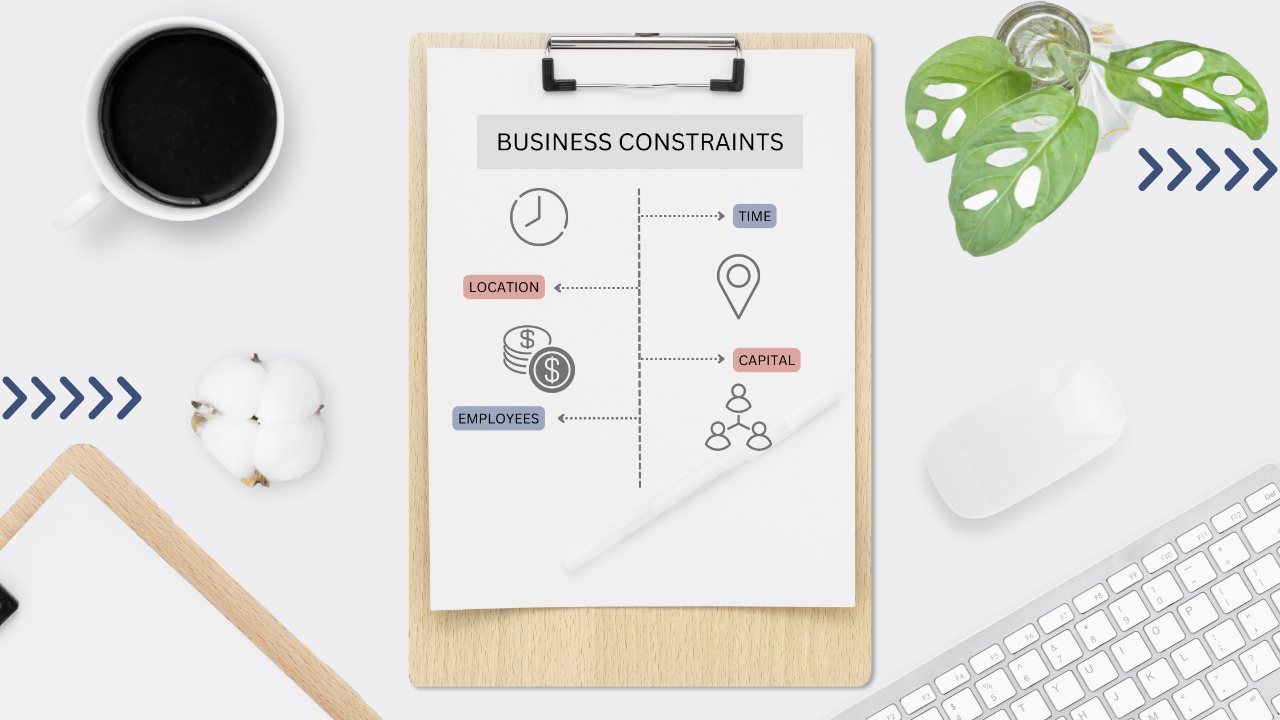Your Business is Capacity Constrained – How to Fix It
Most businesses can’t grow, or can’t grow as fast as they want, because of some capacity constraint. Simply put, they lack enough of an important resource their business needs to be able to generate more sales.
Here are a few examples:
- A restaurant that has a line out the door at lunchtime but is slow the rest of the day
- A yoga studio that doesn’t have enough room for everyone who wants to take the 6 p.m. class but can’t get anyone to show up for the 3 p.m. class
- An online seller who could sell more inventory but can’t afford to buy any more than they already have
- A content creator who could get more views but doesn’t have more time in the day to create more videos
- A law firm has to turn away clients because they don’t have enough paralegal help to process all the potential cases
In each case, the business is losing out on revenue because they can only serve so many customers. In the first two cases, it comes down to physical space available vs. the time of use for that space.
In the third case, it’s a lack of capital capacity and in the fourth, it’s a lack of time. In the last one, it’s lack of staff.
Or at least, those are what the typical business owners in each case would say the problem is and what they need to fix it. And that’s why the get stuck.
Here’s what they could do…
How To Fix It…
Facing some capacity constraint is a fact of life for nearly every business owner. No one has unlimited resources of all kinds to lean on to continue to grow at a breakneck pace for an indefinite amount of time.
And most hit the wall much sooner.
Often in ways that seem insurmountable.
The challenge then for the business owner is to first recognize what the constraint is and then to figure out ways to solve the problem and make sure they’re getting the absolute most out of the resources they do have.
Here are the examples again but this time including ways they can resolve it:
A restaurant that has a line out the door at lunchtime but is slow the rest of the day
A restaurant can only serve so many people at once and we’ve probably all been in the situation where we left to find somewhere else to eat rather than stand in a long line. So what can they do, aside from moving to a bigger location:
- Create a new or better breakfast menu and promote that to the lunch crowd
- Create a dinner menu for the same reason
- Figure out items they can make ahead for grab-and-go customers
- Rethink the menu design to cut down on too many choices to speed up ordering
- Set up an extra register for faster processing of orders at lunchtime
- Set up online ordering or an app for repeat customers to be able to get in and out fast
- Figure out if there are ways to speed up the kitchen/production process
- Promote food delivery options for the off hours
- Run off hour promotions and specials
- And so on!
A yoga studio that doesn’t have enough room for a 6 p.m. class but can’t get anyone to show up for the 3 p.m. class
There are only certain times of day that most people want to or can do things like take time out for yoga and just like a popular concert or performer, those in-demand times should cost more for the people who really want them, and the less popular times should cost less.
Beyond that, getting creative with using the space and creating events for the most involved/active members who will pay more to attend is another way to maximize the space available for revenue generation:
- Charge a premium for the most popular classes and a cancellation/no-show fee
- Offer incentives/discounts for the off-hours classes
- Create subscription programs with “guaranteed spots” tiers
- Offer an online/virtual class option
- Offer premium full day/weekend retreat packages
- Bring in guest instructors/speakers
- Supplement class sales with clothing products/supplements/etc
- Offer related services like massage during off-hours
An online seller who could sell more inventory but can’t afford to buy any more than they already have
In some ways, capital constraints are the easiest to solve because there are lots of sources for capital and if you can demonstrate that you could make more if you could invest more there are no shortages of places that can provide that capital.
It’s also just a math problem- if you know your profit margin and the cost of borrowing, it should be easy to prove that borrowing to buy more inventory is still going to leave you with a profit then it’s a no brainer type decision:
- Negotiate terms with the vendor who can see that you are a steady source of orders for them
- Visit the bank for a line of credit as they can see you are depositing more and more each month
- Speak with a lender who specializes in the industry you’re in who can see how well you’re doing
- Connect with angel investor groups looking for an easy ROI on debt vs a riskier investment in a startup for equity
- Talk to factors about leveraging your purchase orders if you are selling to resellers
- Look at options for borrowing against assets you already own or taking out low/no interest credit cards
A content creator who could get more views but doesn’t have more time in the day to create more videos
The problem here is really just trying to do everything yourself which applies to many business owners. If you can delegate some of what you do and make the most of what are getting out then it won’t seem like the only option is grinding on doing what you are already doing but just more of it:
- Think about doing different kinds of videos that require less time and editing and creative output
- Partner with other creators to leverage their audience as well
- Outsource some of the process to a team that can take on some of the tasks you normally do
- Look at more ways to repurpose existing content into new formats, channels, etc.
- Explore more ways to monetize existing content or get a better return on it than just a baseline ad share
A law firm has to turn away clients because they don’t have enough paralegal help to process all the potential cases
Many businesses are in this boat of being constrained by having enough hands to do all the work whether highly skilled or unskilled or anywhere in between. But there are lots of ways to work on solving this problem:
- Revisit the pay package and benefits you are offering and make sure you’re competitive in the market and getting the best people since the best people will produce the best and most profitable work and more than pay for the premium compensation
- Revisit the workflow and make sure you’re setting people up to be as efficient as possible – not needing to hire as many people for a given workload is also a solution
- Build out an in-house training program so you don’t have to find people with all the skills you need and you can broaden the pool you hire from
- Consider which functions could be done remotely and expand the area you can hire from
- Look at automation options that may allow you to do more with fewer employees
- Make sure you’re focused on the highest profit work and not taking on jobs or clients that require a lot of hands but have lower profit margins than higher profits/fewer people jobs
The bottom line is almost every business faces some kind of block on their growth because of something they wish they had more of but currently don’t.
If everything works great and all you need is more customers, that’s good because those should be easy to find. But that’s rarely the case and the examples above are just a slice of the kinds of issues businesses face in trying to grow.
If your business is facing some constraint that is holding up growth, take inspiration from the ideas here to see if you can creatively solve the problem.
It may not be by simply tackling the problem head-on but instead by getting creative about other ways to work around the obvious limitation and still come out ahead. If you’ve discovered a creative solution to your particular capacity problem I’d love to hear it!








